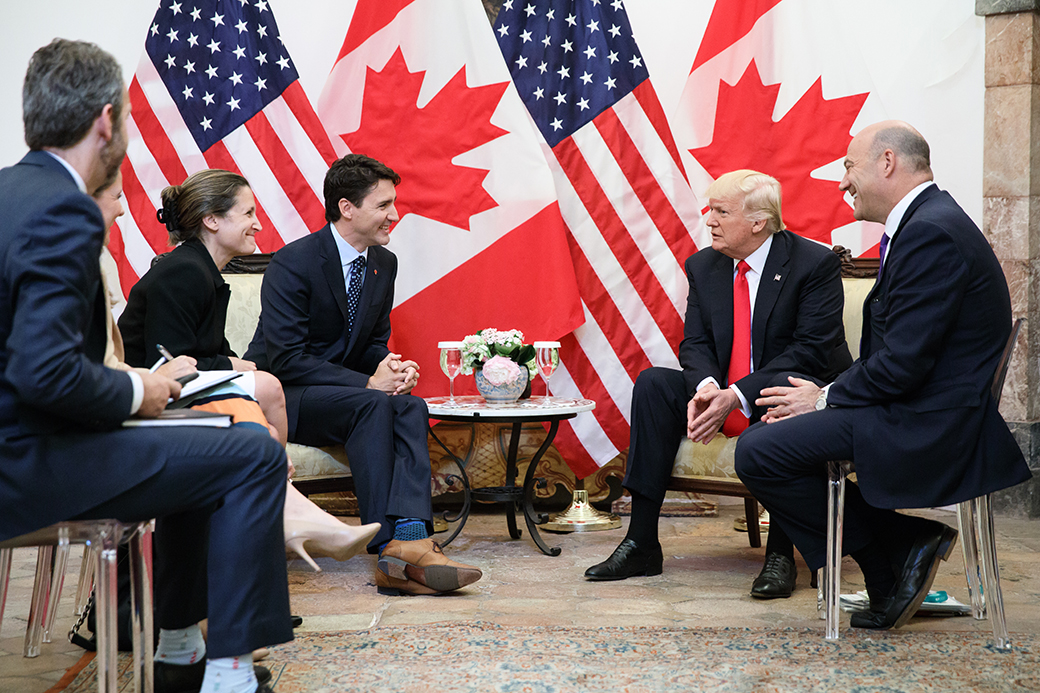The Trump administration’s long-running NAFTA drama took centre stage last month as the U.S. Trade Representative (USTR) released its objectives for the impending renegotiation — and it looks more like a summer rerun than the transformative spectacle we were promised.
In short, the U.S. is pushing for an updated NAFTA modelled on the floundering Trans-Pacific Partnership, even though President Trump campaigned against the “job-killing” TPP and pulled the U.S. out of the deal in January.
The CCPA has long held the position that the TPP would not be in Canada’s best interests, and the prospect of TPP-style provisions forming the core of NAFTA 2.0 is troubling. This model favours corporate rights and restricts the policy space of governments in a way that undercuts our ability to address crucial social priorities, such as improving job security and job quality, fighting inequality, and mitigating and adapting to climate change.
So what’s the alternative? In response to Global Affairs Canada’s consultations on the NAFTA renegotiation, the CCPA has presented a set of modest proposals that attempt to make North American economic integration more equitable and sustainable. Here are six of our key recommendations.
1. Ensure the NAFTA renegotiation process is inclusive and transparent.
For an updated NAFTA to meaningfully enhance North American integration it must directly involve public stakeholders from all three countries, notably long-excluded Indigenous communities, at the outset and throughout. The days when unreachable government negotiators could trade away public policies behind closed doors must come to an end. An inclusive trade policy must start with inclusive and fully transparent negotiations.
2. Encourage the use of government purchasing and infrastructure investment as tools for green economic development across North America.
Canada has repeatedly tried and failed to get a meaningful exemption from Buy American purchasing policies. Instead of attacking these popular policies, Canada should propose the creation of an activist Buy North American policy for new infrastructure spending that would create jobs and spur green economic development throughout the region. If this new co-operative approach is rejected, Canada should implement Buy Canadian policies to maximize national economic and environmental spin-offs from its own planned public investments.
3. Incorporate strong labour rights and environmental standards, and take sustainable development seriously.
NAFTA does not contain a labour chapter or an environment chapter and its side agreements on labour and environmental “co-operation” have proven to be toothless. An updated NAFTA must include strong provisions that elevate labour standards in all three countries, especially in Mexico and right-to-work states, where basic labour rights are routinely denied. It must also include enforceable provisions that elevate environmental standards in all three countries and reinforce multilateral commitments such as the Paris Agreement. NAFTA must ensure governments have the policy space to aggressively transition to a low-carbon economy, which will include measures to phase out fossil fuel production. Removing NAFTA’s Article 605 (the “proportionality clause”), and avoiding locking Canada into another fossil-fuel energy pact with the U.S., are essential to this objective.
4. Eliminate investor-state dispute settlement (ISDS).
NAFTA includes the means for foreign investors and multinational corporations to sue governments in private arbitration for alleged violations of their rights under the agreement. As we’ve documented, the ISDS system has been repeatedly abused by corporations challenging non-discriminatory government measures taken in the public interest, especially related to environmental protection and natural resource management. There is no place for ISDS in a renegotiated NAFTA.
5. Promote and protect public services.
Vibrant, universal public services should be a central goal of sustainable economic development. But trade deals like NAFTA, the TPP, Canada’s CETA with Europe, and the Trade in Services Agreement target public services for commercialization. In all of these deals Canada secured piecemeal protections for public services, but those protections fall short of a full exemption. As a result, governments risk costly investor lawsuits or state-to-state arbitration if they attempt to expand public services, reverse privatizations or create new programs in response to future needs. An updated NAFTA must clarify that the expansion or creation of public services (e.g., dental care, child care), or regulations affecting them, are in no way inhibited by the agreement.
6. Resist new U.S. intellectual property rights demands.
In negotiation after negotiation, the U.S. has pushed for pro-corporate intellectual property rights (IPRs) that go well beyond international standards. As it did in the TPP, the U.S. will likely pressure Canada in the NAFTA renegotiation to extend patent and copyright terms, to prohibit certain measures aimed at protecting Canadians’ privacy, and to protect monopoly profits in the pharmaceutical and media industries. If successful, these provisions would make costly changes to Canada’s IPR legislation, which is already very friendly to industry, without commensurate public benefit.
Be prepared to walk away
Our full set of recommendations, if adopted, would begin to fix a broken NAFTA trade model and help to promote more inclusive, sustainable and democratic societies in Canada, the U.S. and Mexico. However, NAFTA could get a lot worse if negotiators succeed in pushing a TPP-style renegotiation, in which case Canada must be prepared to walk away from the deal entirely. The costs of leaving NAFTA today are minimal when compared to the costs of expanding on an untenable and uninspiring trade regime.
Scott Sinclair is Senior Trade Fellow with the CCPA. Stuart Trew is Editor of the Monitor, the CCPA’s bimonthly magazine. Hadrian Mertins-Kirkwood is a researcher with the CCPA.




